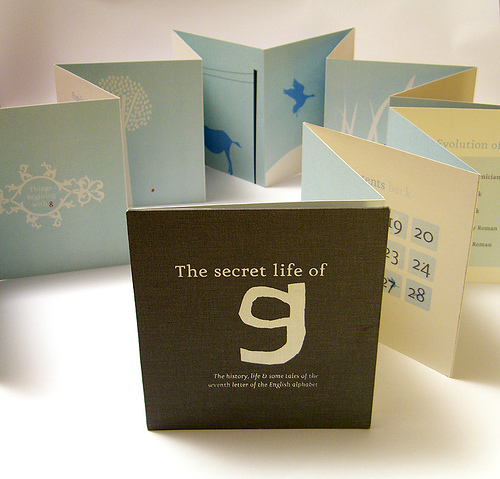 Motivating students to improve their writing skills can be a difficult task for teachers to master. In this post, Verissimo Toste, an Oxford teacher trainer, gives some tips on making the process fun and engaging.
Motivating students to improve their writing skills can be a difficult task for teachers to master. In this post, Verissimo Toste, an Oxford teacher trainer, gives some tips on making the process fun and engaging.
My students look forward to writing a text as enthusiastically as going to the dentist. But writing can be a great opportunity for students to share information and reflect on their learning. For me, the key has always been to emphasize that writing is a process, and then to break it down into manageable chunks. To do this, I ask them to write a story which they will “publish” as a book.
1. Ask students to write a story
This may not be as simple as it seems. Writing a story involves creativity and imagination, not only language skills. If your students find it difficult to create a story, discuss the latest movie they have seen; who was in it?, where did it take place?, what happened? This will help them focus on characters, plot and, setting.
Give them some time to write their story. I usually give them about 15 minutes. This may not be enough time for everyone, but they will have opportunities to continue writing in the next lessons. The key is for everyone to be writing. Encourage them to write in pencil as this is a first draft. At the end of the 15 minutes collect the texts and go on to the rest of your lesson.
2. Divide the story
 Tell your students they are going to publish their story as a concertina book and show them an example. Emphasize that their book will have a cover and 7 pages. Now, return their stories to them and ask them to divide it into the 7 different pages.
Tell your students they are going to publish their story as a concertina book and show them an example. Emphasize that their book will have a cover and 7 pages. Now, return their stories to them and ask them to divide it into the 7 different pages.
Some of the stories may not be long enough to divide into 7 pages. This should encourage students to add to them. Give them some more time to write, again, about 15 minutes. At this point, encourage them to seek help from their friends, sharing the stories they have so far. Once they finish their stories, tell them to give you only the first page. This will probably lead students to re-write the first page to give you, keeping the rest of their story.
So far, you have given your students a few opportunities to improve their stories: adding content to fit into 7 pages, sharing with friends, and re-writing the first page for you. In this way, students have been able to reflect, seeing writing as a process.
3. Start correcting
Correct the students’ first pages. Indicate mistakes you feel they can correct themselves, and correct language they wouldn’t be able to. But don’t limit your role to simply correcting, help them to add more content to their stories by focussing on details. You can write some ‘Wh’ questions to help them with this. Imagine a student has written the following sentence:
“He went to the garden.”
Write: How did he go? Walked? Ran? Hurried?
Why did he go to the garden?
Return their texts and ask them to make the corrections and add any more information. As you return the first page, ask them to give you their second page. Again, give them about 15 minutes to work on their first or second page. As they are working, take the opportunity to help students individually.
Limiting the time to 15 minutes encourages students to make the best use of their class time. Collecting their work page by page reinforces writing as a process, helping them to focus on the language they are using and the story they are writing. It also gives them an opportunity to make changes and correct mistakes, in essence, to improve.
4. Start the books
Ask students to show you the first page they have re-written. Confirm it is correct and give the student the concertina book. Ask them to take their page and add some illustrations. Once they have done this they can glue the paper onto the appropriate page on their concertina book. Once a student has done this, give them their second page to correct and re-write, collecting the third page from them.
At this point students should see writing as a process. Rather than simply being a final judge of their work, the teacher’s role is one of facilitator and editor, helping them to improve their stories. Focussing on each page allows them to share their stories with their friends and react to suggestions. It also allows them to improve their English, correcting mistakes and adding detail to their stories. The illustrations add a visual component to the language, helping them remember the language better. Mistakes made in the initial pages are usually avoided later. As the teacher, correct the texts according to each student’s ability and motivation. The key is to encourage each student to be involved and do their best.
5. Finishing up
As students write their stories, encourage them to help each other with language as well as the interest in the stories. This will reinforce the communicative aspect of the stories – they are not meant just for the teacher, but also for their friends to read and enjoy.
As students finish their books, ask them to read each other’s stories. Tell them there is going to be an awards ceremony and they are going to vote for the best story, the best character, the best illustration, and the best cover. This will encourage them to read more of each other’s stories.
Have them vote and plan the awards ceremony. You may want to make it an Oscar-type event, putting the names of the winners in envelopes, and have guest announcers. Winners may want to make short speeches. The awards ceremony gives the writing activity a sense of achievement and fun at the end.
What activities do you use to encourage students to improve their writing? How do you make your writing lessons more engaging?


[…] Writing for language learners: Emphasizing the process « Oxford University Press – English Langua… […]
it is a very good idea thank you very much
by P RAMESH asst.professor of English at engg.college in INDIA
Thank you very much for this entry. Writing skills are so important and I like your breakdown. Correction is also an essential part of our students learning and it is so important to know how to correct for maximum long-term benefit.
“Studies have shown that because of the cognitive processes in play when the student has to identify and then correct the error for themselves, the long term benefits of simply highlighting errors are clearly superior.
Interestingly enough, studies have also shown no significant difference between Coded and Uncoded Correction in the long term. Coded Correction is where the teacher gives the student the reason the language is incorrect (such as “sp” for spelling). Students were 75% as successful (Ferris et al, 2000) at self-correcting when no codes were given yet the long term results were the same.”
This is from an article on correction on my blog. Here is the address if you would like to read further.
https://glennwickins.blogspot.com/2011/04/correcting-our-students-writing.html